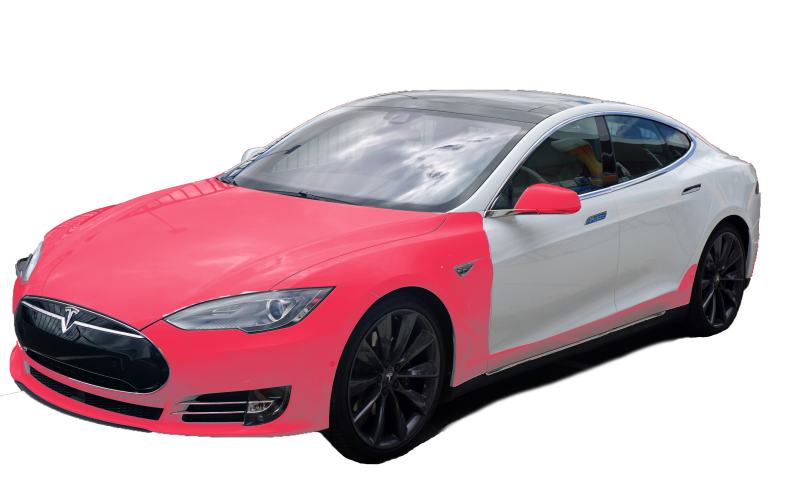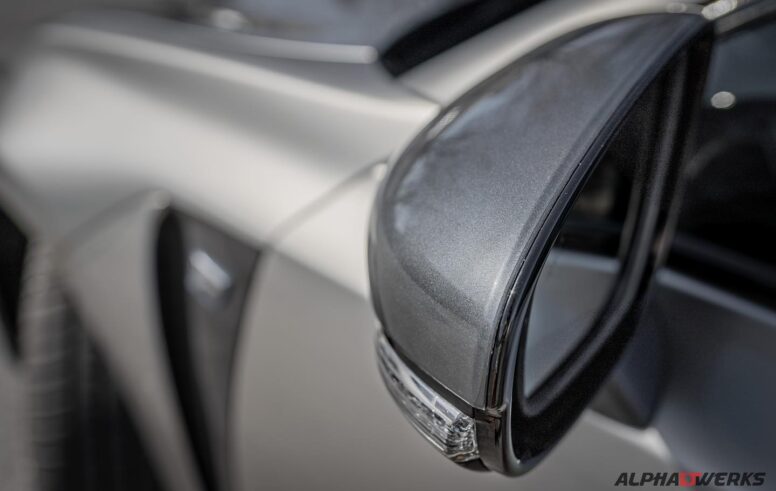From affordable cars where simple, targeted protection might suffice, to high-end models where full coverage becomes almost essential, understanding the relationship between your car’s value and the appropriate level of PPF will help ensure that your investment is both practical and beneficial.
Cost-Benefit Analysis Based on Car Value
When considering PPF for your car, one of the most crucial factors to evaluate is the car’s overall value. This assessment isn’t just about price tags—it’s about understanding cost-effectiveness and ensuring that your investment in PPF aligns with the inherent value of the car.
Low-Value Cars: Less Is More
For cars valued around $20,000, the cost of a full PPF installation, which can escalate to the high thousands or more, is generally not advisable. The reason is straightforward: the investment in protection nearly equals half the value of the car. Instead of extensive PPF, owners of less expensive cars might consider more basic, targeted applications. Protecting key areas prone to damage, like bumpers and side mirrors with partial PPF coverage, can be a more proportionate protective measure that prevents overinvestment in the car’s upkeep.
Here are some other cheaper alternatives that still offer some protection for your car:
- Ceramic Coating: A ceramic coating provides a hard, protective surface on top of your car’s paint, which can help prevent minor scratches and reduce dirt and grime buildup. While it doesn’t offer the same level of protection against physical impacts as PPF, it can significantly enhance the durability and appearance of your paint at a lower cost.
- Wax and Sealants: Regularly applying wax or a synthetic paint sealant can offer a basic level of protection against UV rays and environmental contaminants. These products need more frequent application than PPF or ceramic coatings, but are much more affordable and can still help maintain your car’s aesthetic appeal.
- Vinyl Wraps: While primarily used for aesthetic changes, vinyl wraps also provide a layer of protection against scratches and sun damage. They are generally cheaper than PPF and can be a good alternative for giving your car a new look while also protecting the original paint.
- Regular Maintenance: Sometimes, the best protection is regular maintenance. Keeping your car clean and promptly addressing any paint damage like chips or scratches can go a long way in maintaining the vehicle’s exterior without the need for expensive coatings or films.
High-Value Cars: Full Coverage Is Crucial
Conversely, for a luxury or supercar worth $100,000+, skimping on protection could be a costly mistake. For such high-value cars, full PPF is almost mandatory. It preserves not just the aesthetic appeal, but also the structural integrity and value of the car. Full PPF acts as a barrier against scratches, dents, and environmental damages that can diminish the car’s value significantly—making the investment in comprehensive coverage a wise decision.

Mid-Range Cars: Strategic Protection
Cars in the mid-range value, such as those priced around $40,000, often benefit most from a balanced approach. Complete PPF might not be necessary, but strategic protection can be invaluable. Covering high-impact areas like the front hood, fenders, and front bumper—parts of the car most exposed to road debris and damage—can effectively preserve the car’s appearance and value without the expense of full coverage.

Special Considerations: Tesla and Other Specific Cases
Specific car brands, such as Tesla, are known for issues like paint fragility, which can lead to rapid depreciation if the paintwork deteriorates. For these cars, owners should strongly consider full PPF to safeguard against the well-documented vulnerabilities of the paint. This proactive approach can prevent premature wear and tear, helping to maintain the car’s condition and thereby bolster its resale value.

Full vs. Partial PPF Coverage
When choosing between full and partial PPF for your car, understanding the financial and practical implications of each option is crucial. The decision largely depends on your car’s value, usage, and your budget.
Full PPF Coverage
Full PPF coverage involves wrapping the entire car in a protective film. This option offers the most comprehensive protection against scratches, chips, environmental contaminants, and UV rays. The cost for full coverage typically ranges around $6,000 at Alphawerks and may vary from shop to shop. It’s particularly recommended for high-value cars or those frequently exposed to harsh conditions—meaning a substantial investment to protect a substantial investment.
Cars that would benefit from full PPF coverage are typically high-value vehicles that are either frequently driven under harsh conditions or possess a high market value that owners wish to preserve.
Luxury Sports Cars and Supercars
Exclusive Limited Edition Models
|
Partial PPF Coverage
Partial coverage, on the other hand, focuses on high-impact areas such as the front bumper, hood, side mirrors, and fenders. This option is cost-effective and can significantly reduce the risk of damage where it most often occurs. The cost for a Base Front End Package at Alphawerks (Full hood, fenders, and front bumper) starts at $1,900 and may vary depending on the level customization. It’s an ideal choice for mid-range cars or those used in less demanding conditions. Partial PPF provides a balanced approach, protecting the most vulnerable parts of the car without the substantial investment required for full coverage.
Partial PPF is especially suitable for new or mid-range vehicles that face regular exposure to road hazards but where full PPF may not be cost-effective. Here’s a list of car types that commonly benefit from partial PPF:
|
Quiz: Is Full Car PPF Worth It for You?
This quick quiz will help you decide if investing in full car paint protection film makes sense based on your car’s value, usage, and your personal preferences.
Question 1: What is the current value of your car?
- A) Less than $20,000
- B) Between $20,000 and $40,000
- C) Between $40,000 and $100,000
- D) More than $100,000
Question 2: How do you primarily use your car?
- A) Daily commuting in urban areas
- B) Frequent long-distance travel
- C) Occasional use, mostly on weekends
- D) Mainly for show, rarely driven
Question 3: What is your primary concern with your car?
- A) Keeping costs as low as possible
- B) Maintaining good resale value
- C) Ensuring maximum protection and maintenance of appearance
- D) I’m not concerned; I just want basic protection
Question 4: How long do you plan to keep your current car?
- A) Less than 2 years
- B) 2 to 5 years
- C) 5 to 10 years
- D) More than 10 years
Question 5: Have you experienced significant paint damage on cars in the past?
- A) Yes, frequently
- B) Occasionally
- C) Rarely
- D) Never
Results:
- Mostly A’s: Likely not worth the investment. Your car’s value and usage do not justify the high cost of full PPF. Consider partial coverage or other less expensive options.
- Mostly B’s and C’s: Full PPF could be a good investment. Your car holds substantial value or you prioritize maintaining its condition, which makes full PPF a reasonable choice.
- Mostly D’s: Full PPF is recommended. Given the high value of your car, the desire for maximum protection, or long-term ownership plans, full PPF will provide the best long-term benefits and protection.
Maximize Your Car’s Protection with Alphawerks Garage
Ultimately, the choice on whether full car protection film is worth the investment is yours to make based on your needs and values—but once you decide, Alphawerks Garage is here to help! Whether you opt for partial or full coverage, we offer tailored solutions to protect your car and keep it in top condition.
Contact Alphawerks Garage today to take the first step.
- Understanding the Cost Benefit of Full Car vs Partial Paint Protection Film: Is It Worth It? - April 29, 2024
- What is Windshield Protection and How Does It Work? - April 25, 2024
- Professional Window Tint vs DIY: Making the Right Choice for Your Car - April 23, 2024


